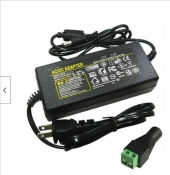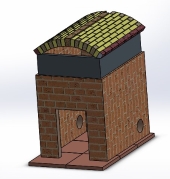







Scott Weinberg wrote:
Daniel Vogel wrote:Hi,
Not a Structural Engineer and no experience with arches, but:
Both arches will put the same amount of vertical load into the base. The flatter arch will carry more put more outward lateral ('thrust') load into the base. You may want to reinforce the sides ('abutments') to react the additional thrust. How much? I could help with this, or there may be tables online.
Think of it this way: Arches are effective because they carry load in hoop compression (which is efficient) rather than bending (which is inefficient and produces tension - bad for brick). Depending on how rigid the structure is, as the arch gets flatter it will either generate more thrust or start to behave like a beam in bending (bad).
Let me know if you would like more help!
Thanks Dan, here is my plan
AS most have seen, I can draw up just about anything (view) to calculate the needs. That way I can verify it can be built. (most of the time) Then onto the calculations for loads and so on. If I can make the suggested T-bars work, that would be the simplest, but because of the size of this stove bell, I was in great hopes, someone has done and used extensively over the course of a full season or more. As of yet, I have not found this to be true for a single bell, 7" size.
So in the mean time, I will keep laying up the bell and batch stove, as I know and trust the specs for both of those.
cheers
Scott
